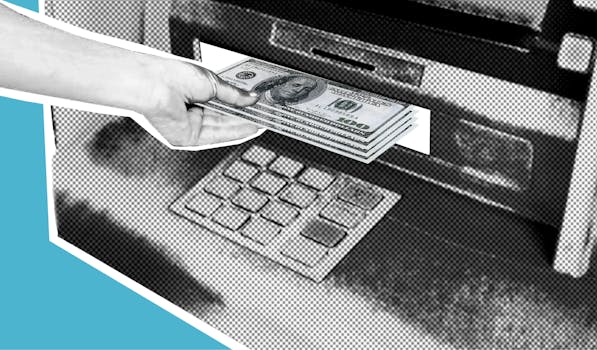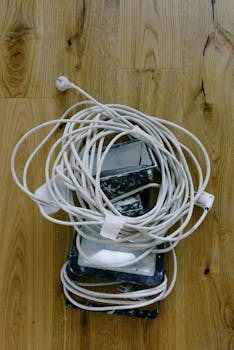Household Economy
Create a Weekly Grocery List That Cuts Costs Without Sacrificing Flavor
Discover the real-life steps for building a weekly grocery list that helps you save money every week while reducing food waste and keeping delicious meals on the table. No hype, just clear and practical tips.
Advertisement
Most people overspend at the store without structure. Waste creeps in through impulse buys or forgotten ingredients. A tactical approach, grounded in real routines, can unlock real savings.
This guide invites you to reframe the weekly grocery list. You’ll discover practical steps that turn lists into money-savers, with examples and tips you can use every week.
Pinpoint Your Shopping Triggers to Save Immediately
Identifying patterns in what draws you to the grocery store is a real eye-opener. When you know your triggers, you can plan ahead and keep your spending under control.
Tracking your habits gives you clarity. Maybe you find yourself saying, “I’m picking up basics,” yet leave with extra snacks. Recognizing these routines helps with a weekly grocery list that addresses the real cause.
Spotting Emotional Purchases
Late afternoon slumps draw many shoppers to the snack aisle. If you usually shop while hungry, add a quick snack at home before heading out. You’ll focus on essentials and limit extras.
On weekends, serotonin spikes make treats more tempting. Write your weekly grocery list calmly, earlier in the day, to avoid emotional spending. A clear mind leads to smarter selections.
Borrow a tactic from mindful eaters: “Stick to the list in your hand.” If you feel tempted, simply reread your list to anchor yourself, then walk away from distractions.
Breaking the ‘Just in Case’ Habit
Filling your cart with ‘extras’ for imaginary scenarios makes wallets lighter. Instead, jot down realistic events for the week. “Soccer game snacks” or “movie night treats”—but only as actually planned.
If you catch yourself saying, “What if we run out?” check cupboards before shopping. Add only missing items to the weekly grocery list. This curbs excess while solving potential shortages.
Play out a short scenario before buying: “If I don’t purchase this now, what will happen?” Stick with what you truly need by being honest about likely outcomes.
| Trigger | Resulting Habit | Adjustment | Next Step |
|---|---|---|---|
| Snacking when tired | Impulse snack buys | Eat before shopping | Mark scheduled snacks only |
| Shopping after work | Rushed, random items | Shop on weekends | Schedule weekly grocery trip |
| Sales emails | Overbuy on deals | Review current inventory | Buy only list items |
| Unplanned dinners | Last-minute purchasing | Meal plan in advance | Use weekly grocery list template |
| Cooking boredom | Experimenting on a whim | Pick one new recipe weekly | Limit to scheduled try-outs |
Streamline Meal Planning for Consistent Savings
Choosing meals for the week sets the tone for your budget. Anchoring your weekly grocery list to planned dinners makes shopping purposeful and prevents waste.
Simplify your rotation with meals built around similar ingredients. This lets you buy in bulk but finish everything before it spoils—and it speeds up prep on busy nights.
Choosing ‘Anchor’ Ingredients
Start with three proteins you enjoy and know how to cook. Example: “chicken breasts, beans, eggs.” Let these building blocks repeat through several meals for the week.
Vegetables that last, like carrots and kale, join your anchor list. Round out your shopping with grains and a fruit or two. Your weekly grocery list becomes intentional, not scattered.
- Pick up large packs of chicken or beans—use in various dishes, such as stir fry one night and tacos another, so nothing goes to waste.
- Choose versatile veggies—carrots work for snacks, soups, and roasting, so buy a larger bag you’ll use up.
- Plan two dinners using the same green, like kale in soup and sautéed for a side. This reduces forgotten produce waste.
- Use rice, potatoes, or pasta as weekly grain anchors. Buy based on sales and rotate to keep meals interesting and budgets tidy.
- List one “flex” meal—such as loaded baked potatoes—using up remaining odds and ends before your next shopping trip.
Meal planning shouldn’t add stress. Even a rough outline (like “meatless Monday” or “grill Friday”) helps you write a weekly grocery list with accuracy.
Batching for Leftovers and Lunches
Batch-cooking guides your weekly grocery list toward volume discounts. Doubling recipes Monday or Wednesday means you’ll have packed lunches, cutting down on pricey midweek splurges.
Embrace a “cook once, eat twice” motto. Roasting a tray of veggies or extra protein guarantees ingredients won’t get lost in the fridge before you use them.
- Roast two pans of veggies: serve half tonight, and use the other in wraps or salads through the week for variety without fuss.
- Double recipes for chili or stew; freeze half, and eat the rest over two nights. This makes a big impact on time and money.
- Make enough for dinner and lunch. Pack leftovers right after dinner so mornings stay quick and your portions remain even.
- Prep grains in bulk—brown rice or quinoa fill in as a side, salad base, or quick bowl with leftovers, helping cut last-minute purchases.
- Mark “planned leftovers” on your grocery list, so every extra dollar spent goes toward meals you really will eat.
By batching, you can skip pricier convenience options and keep your weekly grocery list focused and affordable.
Organize Your List by Store Sections for Fewer Impulse Buys
Shoppers planning their route by grocery store layout spend less and save time. Catalog your weekly grocery list under sections like produce, meat, dairy, and snacks—which keeps your head clear and reduces distractions.
Imagine entering with a map. You collect exactly what’s on the list, ignoring tempting aisle endcaps. This discipline guides every decision, so you make it to the register with only what you need.
Creating a Visual Template
Write your weekly grocery list on paper split into categories or use a digital note with sections. For instance, draw four boxes labeled “Produce,” “Meat/Protein,” “Pantry,” and “Fridge.” Fill them as you plan meals.
When shopping, follow a clockwise path around the store, starting and ending at produce. Checking off each box as you go lets you focus and leave little room for impulse grabs.
Every section gets checked twice—once at home as you plan, again at the store. This prevents the dreaded double-purchase and helps catch any overlooked essentials.
Grouping for Quick Decision-Making
For families, separate the list into “needs” and “wants.” Assign each family member a category when shopping together; they become invested and responsible for sticking to it.
If you shop alone, color-code or star only “must-haves.” At the store, pause after each section to review your cart for duplicates or unnecessary items before proceeding.
For busy weeks, use highlighters or phone app tags to mark perishables that must be eaten first—this cuts down on spoilage and repeat purchases later in the week.
Opt for Seasonal and Bulk Buys to Maximize Savings
Sticking to items in season means bigger flavors at lower costs. Adding these to your weekly grocery list ensures you get quality and savings in your basket.
Bulk buying isn’t about hoarding; it’s about matching larger purchases to actual consumption. If apples are on sale, list them for both snacks and cooking so they won’t go to waste.
Spotting Deals Without Overbuying
Predict what will actually get eaten before reaching for a bulk pack. For example, circle “bag of oranges (peel 3/day)” on your list, giving yourself a clear plan for how to use them.
When fresh berries are cheap but perish quickly, commit to using them in three ways: fresh snacks, smoothie packs, and topping for yogurt or oatmeal.
Visualize shelf space at home when considering pantry staples—buying three cans of tomatoes is a win if you cook pasta twice and soup once that week.
Choosing Value by Cooking Style
Use slower-cooker recipes for tougher, affordable cuts of meat. When whole chickens cost less per pound, earmark them for at least two planned meals on your weekly grocery list.
If you love salads, buy bunches of greens and prep them at once. Bagged lettuce costs more and wilts faster, so choosing whole heads saves cash and lasts longer.
Freeze extra bulk-bought bread or meat right away. Jot “freeze half” next to these items on your list as a reminder, so nothing gets wasted and each dollar stretches further.
Track Spending and Adjust Your Approach Each Week
Reviewing receipts and comparing them to your weekly grocery list uncovers patterns. Spotting which categories absorb your money lets you make data-backed tweaks to your habits, tightening up both budget and behavior.
Analyze last week’s list. Did you stick to it? Mark what was leftover, tossed, or never touched. This learning loop builds better lists and transforms shopping from obligation to strategy.
Simple Systems for Budget Accountability
Round up your weekly receipt total—if you aimed for $80 and hit $86, adjust next time. Highlight places you overspent and note why: price changes, impulse adds, or recipe changes?
Encourage family to give feedback: Did anyone forget items? Were there last-minute needs not on the list? Their input makes shared lists more effective and less stressful.
If receipts pile up, snap a phone picture and make a quick tally every Sunday night. After three weeks, you’ll see a clear pattern for smart trimming or occasional splurges.
Updating Lists and Recipes for Flexibility
Refine your core meal and snack list each month, removing unpopular or waste-prone items. For example, if spinach always goes slimy, swap frozen for fresh next week.
Experiment with one new ingredient at a time, like swapping dried beans for canned. Note if it saves money, adds effort, or boosts flavor before locking it in as a staple.
Review your list layout too: would grouping items differently save time? Maybe “hot breakfast” moves from a weekend treat to an everyday staple. Tailor as seasons and schedules shift.
Conclusion: Building a Weekly Grocery List for Real Life
Your path to saving money with a weekly grocery list starts with knowing your patterns and sticking to concrete plans. Embracing this habit rewires your approach and grows real savings over time.
Rethinking shopping routines and focusing your list pays off both financially and emotionally. The practice isn’t just about numbers—it’s about reclaiming confidence in your kitchen and cutting waste every single week.
Kitchens become efficiency hubs, and grocery lists a tool anyone can master. Use these steps routinely and you’ll transform your budget and weekly meals with lasting, rewarding results.
Frequently Asked Questions
What’s the fastest way to start building a weekly grocery list? Start by meal planning three dinners, checking kitchen staples, and listing what you lack. Use paper or a phone app divided by categories to keep things organized and efficient.
How can I prevent duplicate purchases with my family? Divide the list by store sections and assign each person a category. Review the complete list together before shopping, so nothing gets doubled and everyone feels involved in the decisions.
Do I need to buy bulk to save money? Only buy in bulk for items you’re sure to use up, like favorite grains or proteins shared across meals. Label bulk items on your weekly grocery list for multiple uses to cut down on waste.
What if recipes change during the week? Build flexibility into your list with “flex meals” or staples like eggs, rice, or beans. This way, if someone changes plans, you have backup options ready without running back to the store.
How do I pick which store to shop at? Choose the store with the best value and reliable sales on your core list items. After a few trips, track where essentials cost less and adjust your routine to maximize both quality and savings.





